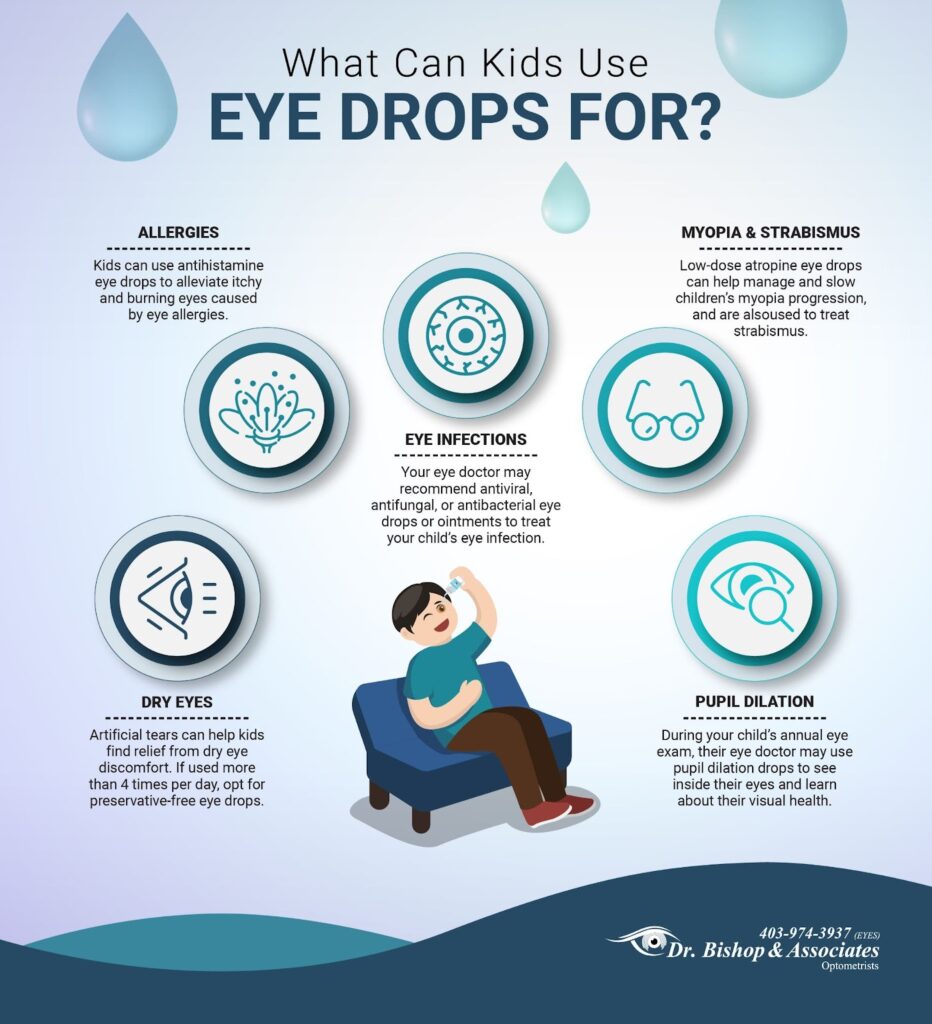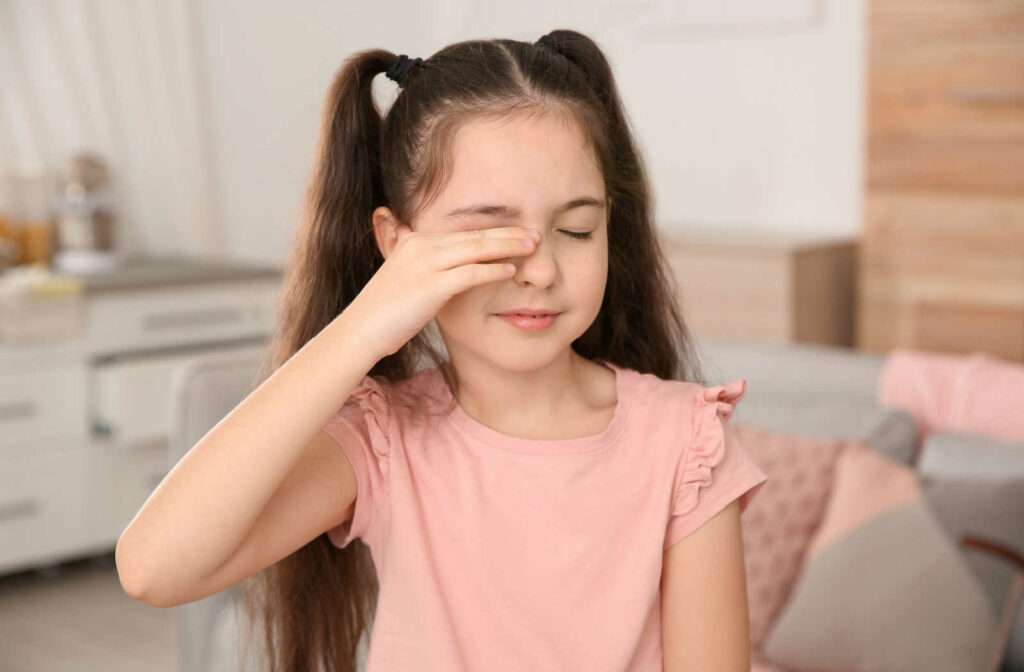Eye drops can be a wonderful tool for treating a variety of eye concerns, including infections, allergies, and dry eyes—but not all eye drops are safe for kids. When it comes to growing eyes, choosing delicate, kid-friendly eye drops recommended by an optometrist is the key to success.
Some safe options for kids’ eye drops include artificial tears, antihistamines, low-dose atropine drops, and dilating eye drops administered by an eye doctor. It’s important to note that kids often require different dosages to be treated safely and effectively. Always consult with your eye doctor to determine the right kind and amount of eye drops your child should use.
What Can Kids Use Eye Drops For?
Depending on what type of eye condition you’re looking to relieve, there are a variety of options for kid-safe eye drops. From mild irritation to myopia management, the type of eye drops your child can use will depend on their purpose and your child’s eye health.

Dry Eyes
Dry eyes can happen to anyone at any age. Common symptoms of dry eye in children include a dry or hot sensation, overly watery eyes, and the feeling of sand or dirt in the eyes. Dry eye can also cause redness and sensitivity to light.
While the condition can be uncomfortable, artificial tears may be an easy way to provide quick relief. Most kinds of artificial tears can be safe to use up to 4 times a day, but if your child requires them more often, it’s best to use preservative-free eye drops.
Allergies
For kids experiencing allergies affecting their eyes, antihistamine eye drops can be an effective way to find relief. The most common culprit of an eye allergy is pollen, causing symptoms like burning, stinging, and itchy eyes.
In addition to antihistamines, washing your child’s face, rinsing their eyes gently, and keeping their hair clean can also provide relief from allergies.

Eye Infections
Allergies are not the only reason your child may get itchy, stinging eyes. Eye infections like conjunctivitis (AKA pink eye) can cause similar symptoms—but they can also be treated with antiviral, antifungal, and antibacterial eye drops or ointments.
At the first sign of an eye infection, contact your eye doctor for a proper diagnosis and guidance on treatment.
Myopia Management
Myopia, or nearsightedness, is a common refractive error that often appears in childhood. Myopia tends to get worse over time, but low-dose atropine eye drops are among the many treatment options available to help manage and slow myopia progression in children.
Atropine drops can also be used to treat amblyopia (lazy eye) in children. Consult with your optometrist to determine if these drops could be a viable option for managing myopia or strabismus alongside other treatments.
Pupil Dilation
Regular eye exams are a huge part of caring for your child’s developing vision. During their annual exam, their optometrist will perform a variety of tests, which may include dilating eye drops. With the use of these drops, their eye doctor can see inside their eyes and check for eye problems or conditions, and determine whether your child needs glasses.
How to Give Your Child Eye Drops
While most kids (and even adults) are not keen on having anything touching their eyes, there are a few steps you can take to help the eye drop process go smoothly. Before you get started, focus on the environment and helping your child feel relaxed and prepared.
Here’s a handy guide to help you through the process:
- Try to create a calm, soothing environment for you and your child by appearing relaxed and explaining what you’re doing and why.
- Gather all necessary materials (drops, tissues, washcloths, etc.) and wash your hands before administering the drops.
- To avoid contamination, don’t touch the tip of the bottle to any surface, including the eye, eyelid, or eyelashes. Use alcohol to sanitize the tip if there’s any chance of contact.
- Ensure your child is in an appropriate position—tell them to look up slightly to the side, as this can help direct the eye drops away from their nose. Place the wrist of the hand you’ll use on their forehead to stabilize your hand and help position your child.
- Bring the dropper close—approximately 1 inch above their eye—then release the drop close to the lower eyelid but away from the tear ducts (the inner corner of the eye).
If your child normally wears contact lenses, check to see whether the eye drops you’re using are safe for contact lenses. Some eye drops, like rewetting drops, are compatible with contacts, while others can cause problems. Consult with your eye doctor to find out if your child can wear contacts with the eye drops you’re using.
Expert Advice for Your Child’s Health
When it comes to kids’ eye health, consulting with an optometrist is essential. With the right eye drops, you can support your child’s vision and ocular health. It’s important to choose the appropriate dosage and administer them correctly for optimal results.
At Dr. Bishop & Associates, we prioritize communication, honesty, and integrity when it comes to your vision and ocular health; with us, you can trust that your & your child’s eyes are in good hands. If you have questions about eye drops to support your child’s vision, contact our team today!




